Before embarking on the search for your wedding gown, you should familiarise yourself with the various terms to maximise your time in the bridal boutiques.
Shapes
Mermaid
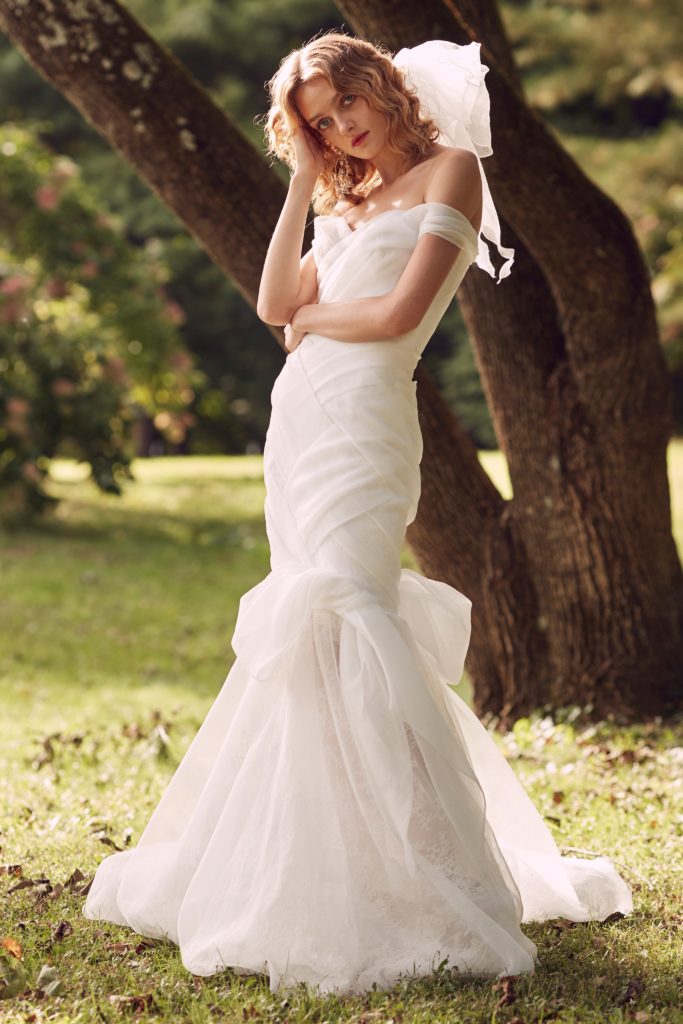 Mermaid dress by Marchesa
Mermaid dress by MarchesaA figure-hugging silhouette which flares just below the knee and is flattering to the female figure, this style is considered quite glamourous. Best suited to hourglass or rectangle shapes, this style gown hugs your figure.
Ball Gown
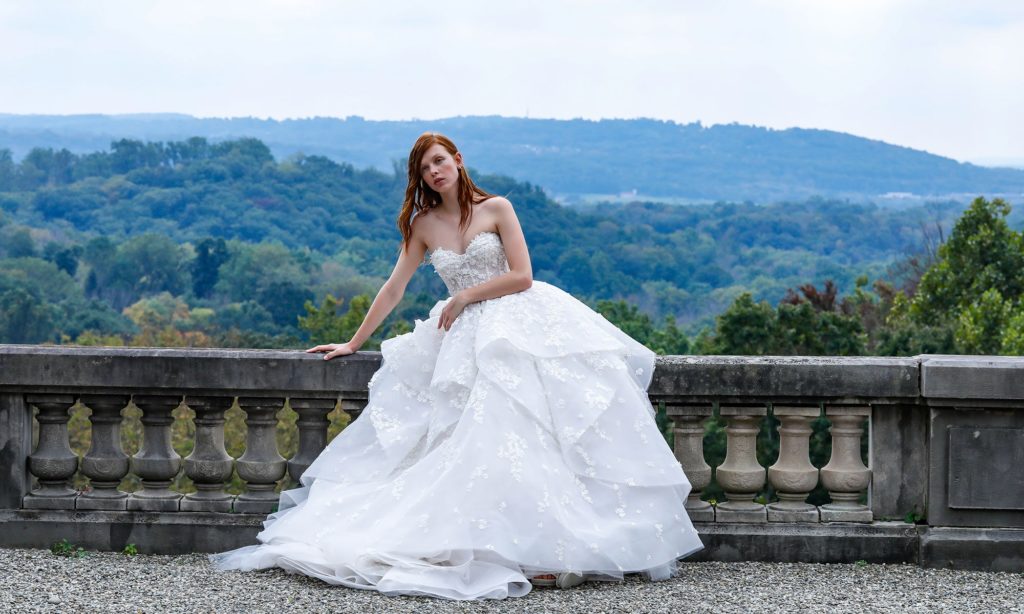 Ball gown by Monique Lhuillier
Ball gown by Monique LhuillierThe most traditional of styles, the ball gown features a tight bodice which flares out into a full skirt. The skirt can often be quite heavy with layers of material, such as tulle, underneath to help give the gown shape.
Sheath
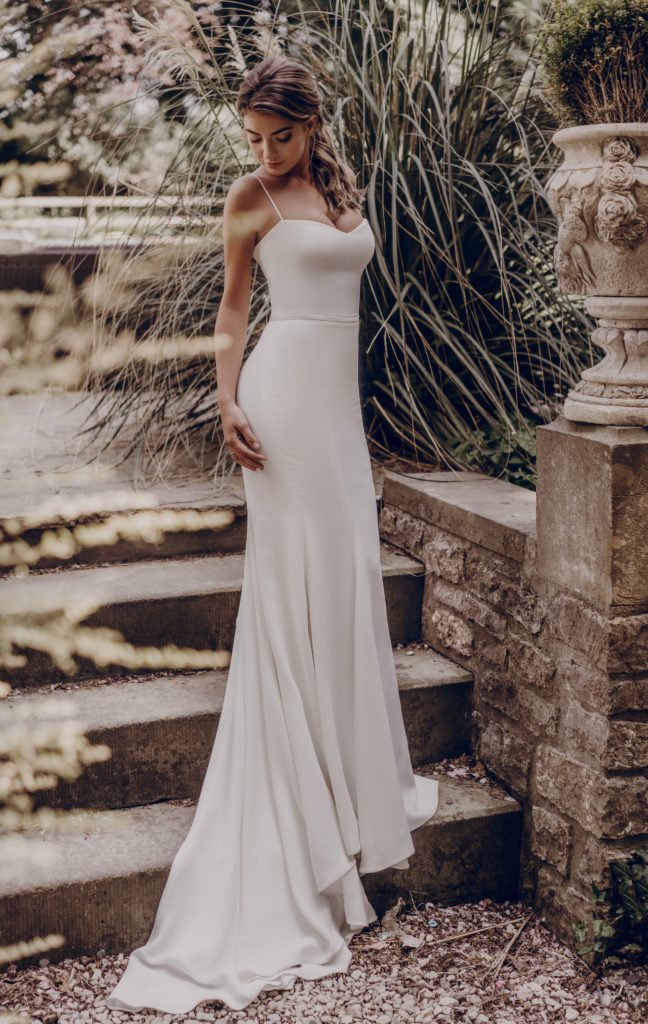 Sheath dress by Stephanie Allin
Sheath dress by Stephanie AllinAlso known as the column dress, these dresses are usually made from lighter fabrics such as chiffon or satin and hug your figure. Sleek and sexy, this style can help to elongate the figure.
A-Line
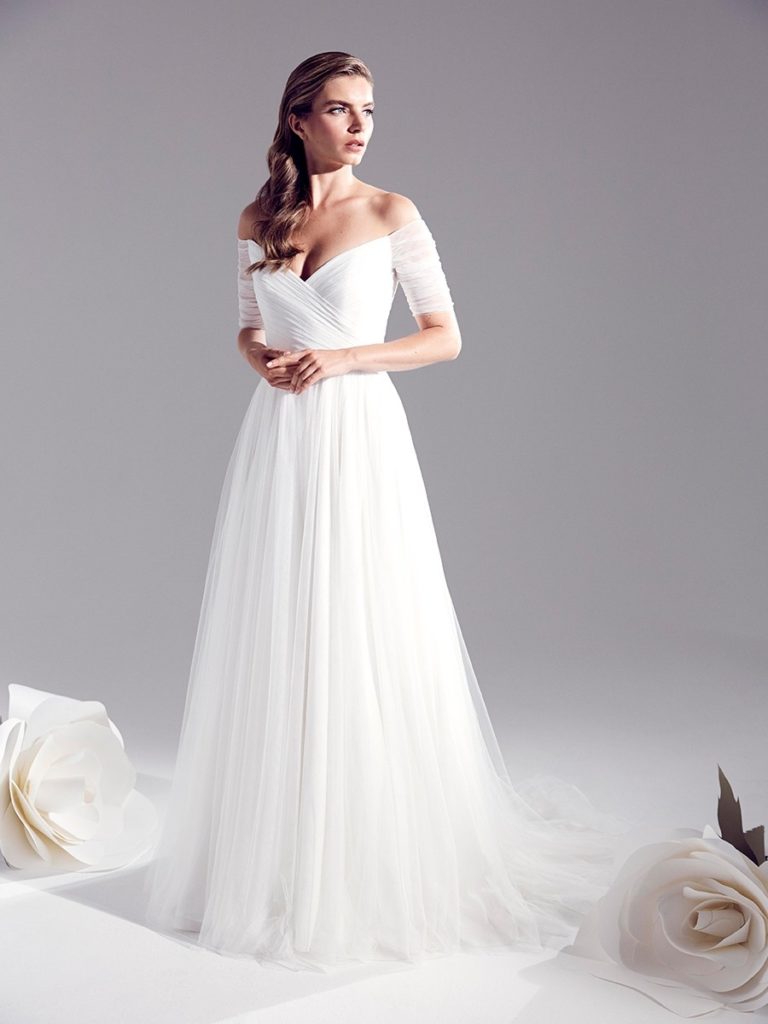 A-line dress by Jenny Packham
A-line dress by Jenny PackhamFlattering to the majority of shapes, this style features a fitted bodice which flares out just below the waist, creating an A shape. Typically made with heavier fabrics to maintain the A shape.
Fabrics
Tulle
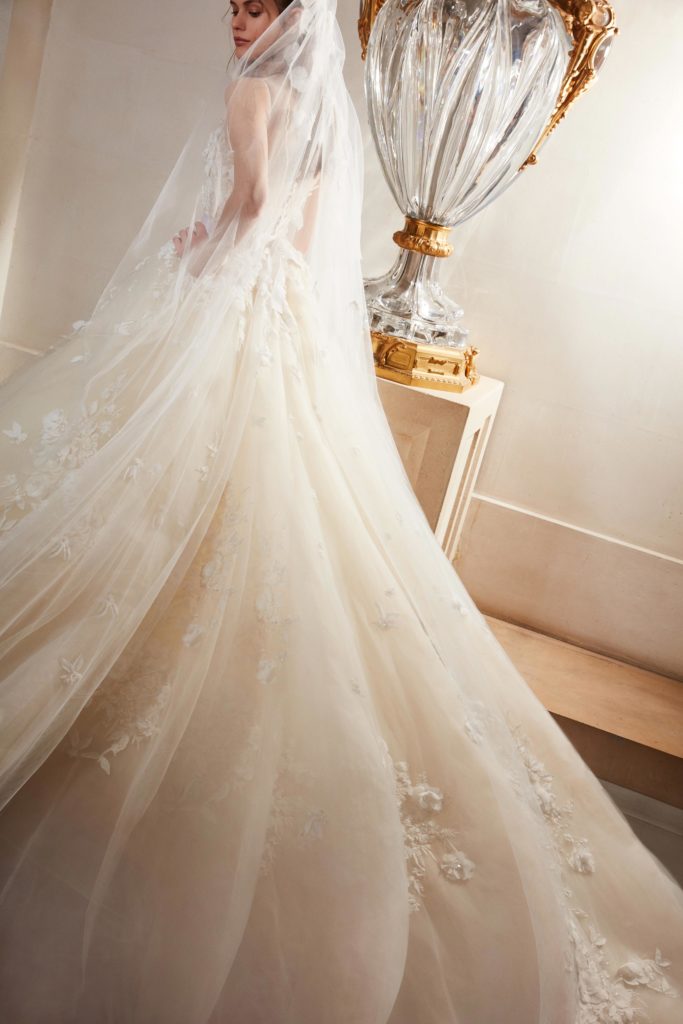 Tulle dress by Elie Saab
Tulle dress by Elie SaabLightweight and designed to bulk out a gown, tulle is a fine netting which can be used as an accent or to create a full skirt. This is most common in ballgown styles.
Satin
 Satin dress by Caroline Castigliano
Satin dress by Caroline CastiglianoA shiny fabric, satin is extremely popular in wedding dress designs. Heavier than silk but still smooth and bright, satin gives slightly more structure than a silk design. Different varieties are available including Poly Duchess Satin, Crepe Back Satin, and Charmeuse.
Silk
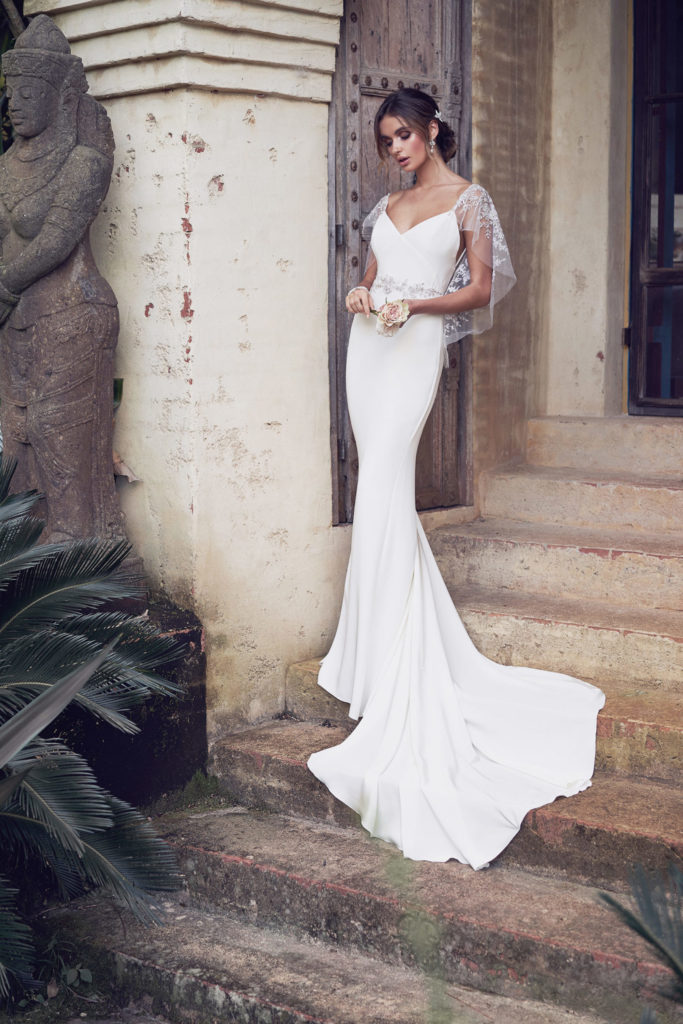 Silk dress by Anna Campbell
Silk dress by Anna CampbellSoft and smooth, silk is one of the most desired fabrics and often the most expensive also. Lavish and exquisite, it is available in a variety of different textures such as raw or Mikado.
Lace
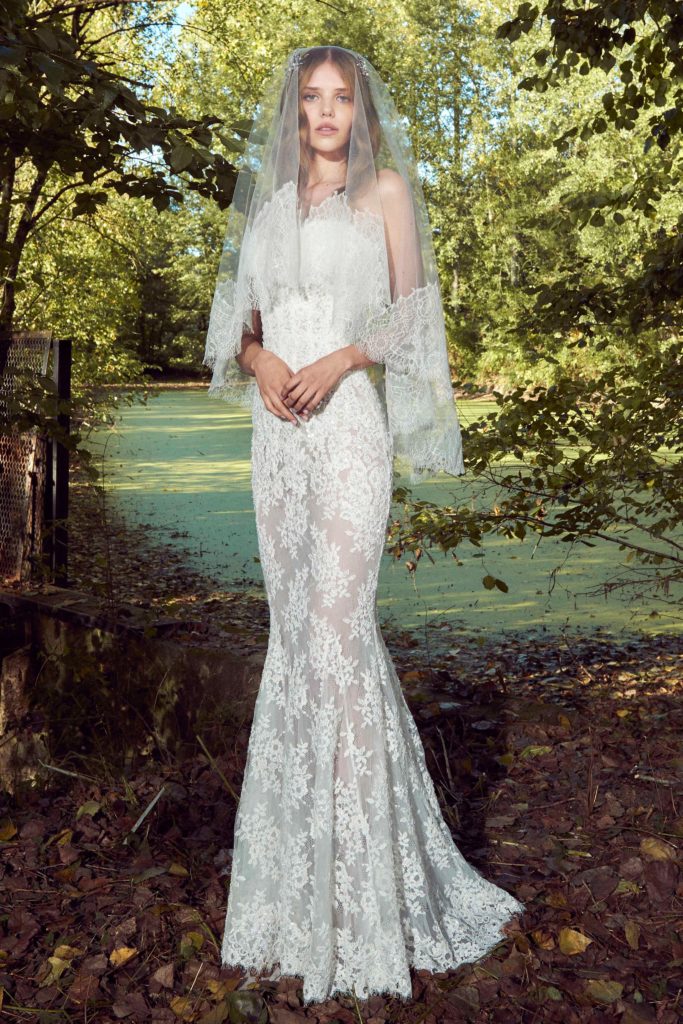 Lace dress by Zuhair Murad
Lace dress by Zuhair MuradUndeniably elegant and popular throughout time, lace lends a certain grace and romance to any dress. Available in a multitude of variations including Chantilly, Guipere or Alencon to name a few, the options are endless.
Length
Tea
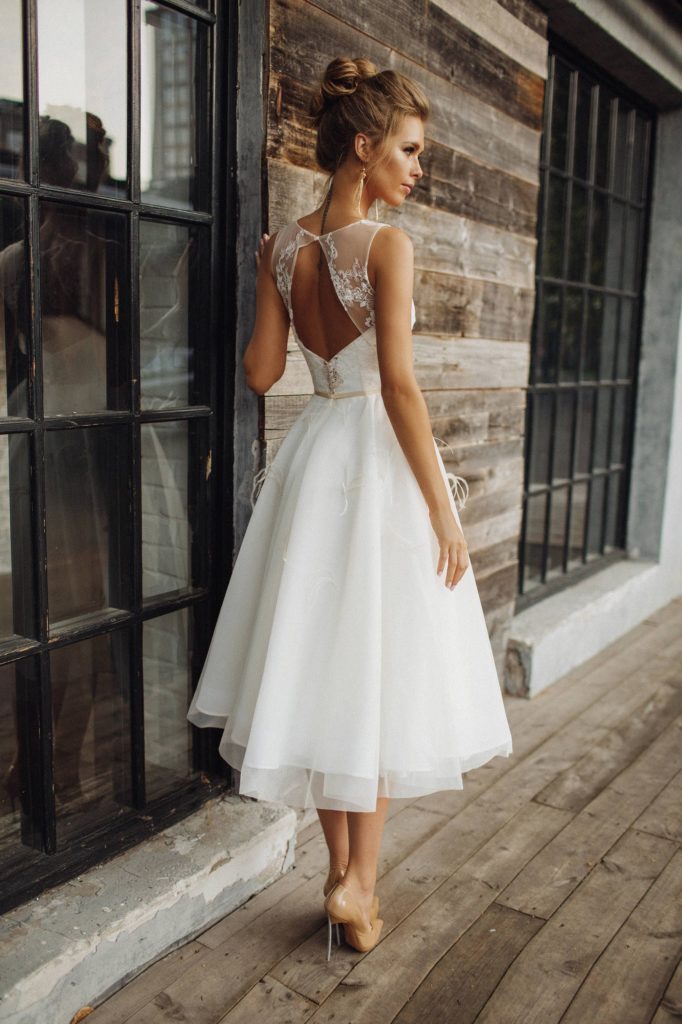 Tea-length dress Alex Veil Bridal
Tea-length dress Alex Veil BridalThe ideal length for shoe lovers, tea-length gowns should just skim your shins and are the perfect excuse for a pair of show-stopper shoes. This is the perfect length for brides hoping for a vintage touch.
Floor
 Floor-length dress by Limor Rosen
Floor-length dress by Limor RosenThe most popular length for wedding gowns, the hem falls to the ground on each side of the skirt. Perfect for both column style gowns and those with a fuller skirt, the floor-length gown is flattering for all shapes and sizes.
Knee
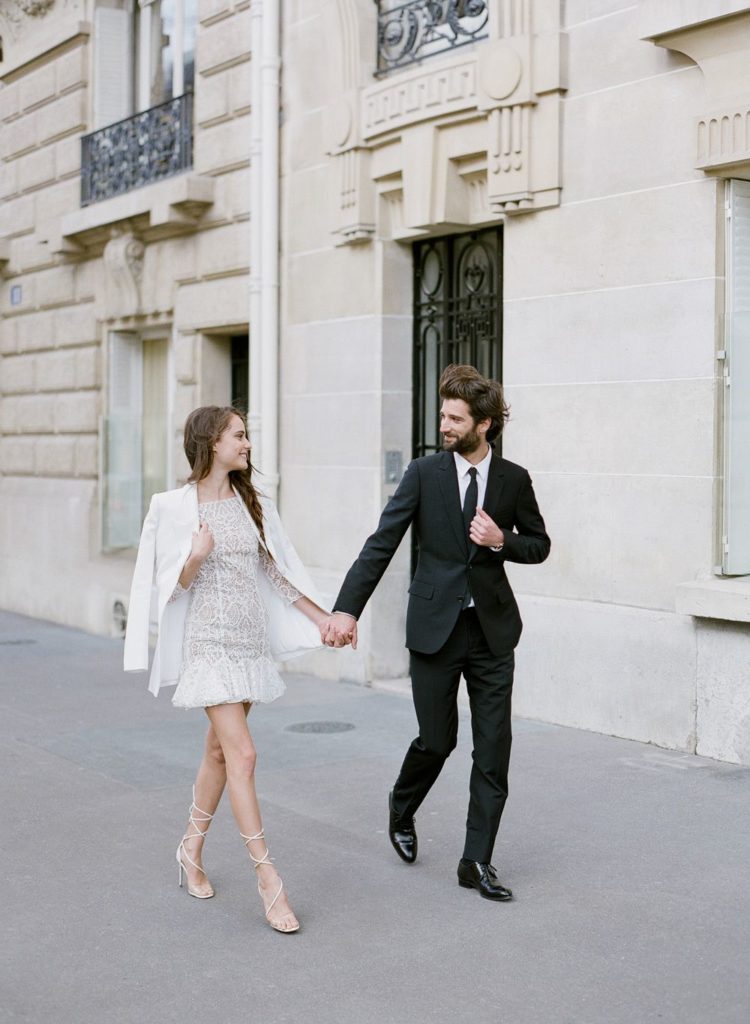 Knee-length dress by Rime Arodaky
Knee-length dress by Rime ArodakyFor brides who want to show a bit of leg, knee-length is ideal for weddings abroad or perfect for you ladies with a killer set of pins. Slightly more casual, this is the perfect length for those who dare to bare.
Midi
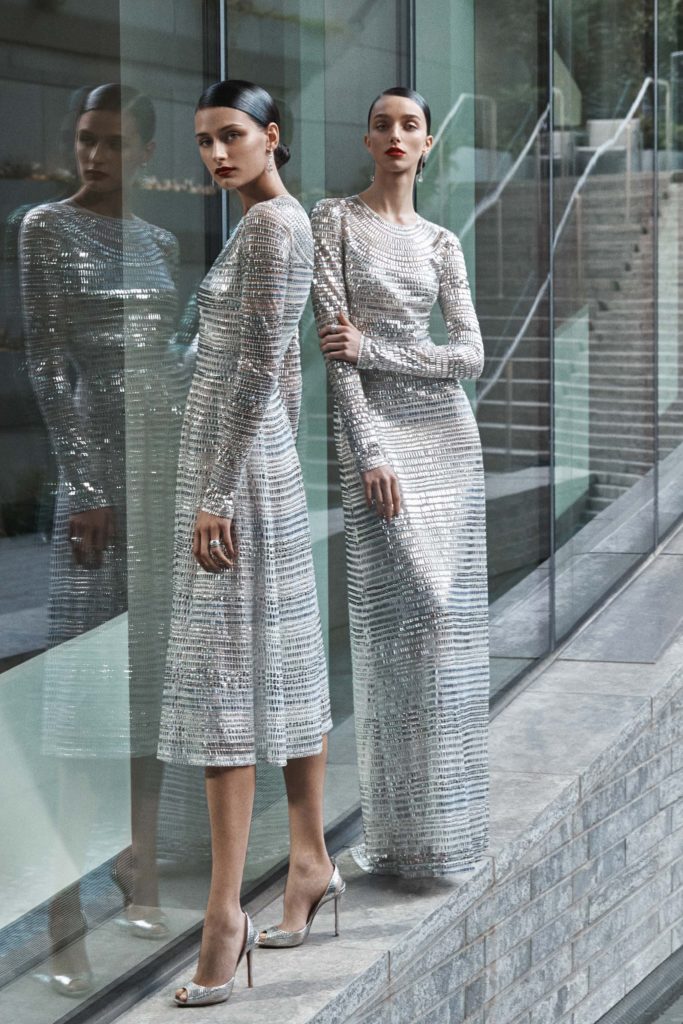 Midi-length dress by Naeem Khan
Midi-length dress by Naeem KhanIf the big white wedding isn’t your thing, the midi length which falls just below your knees is the perfect solution for a chic and sleek bride. This is ideal for those who want something less restricting for dancing at their reception.
Designs
Ruffles
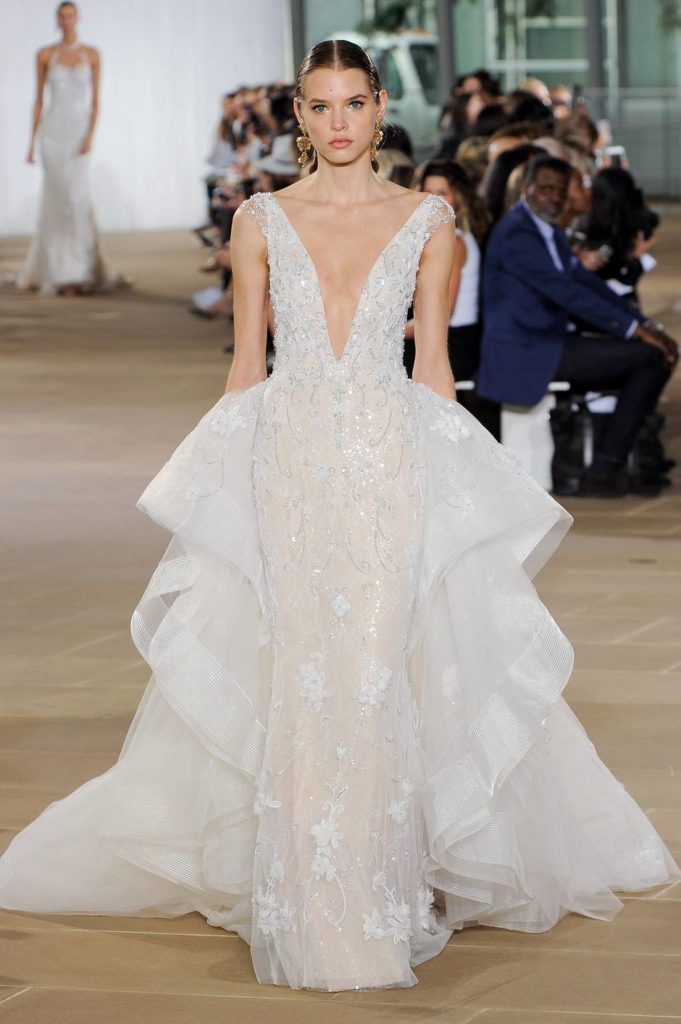 Ruffled dress by Ines di Santo
Ruffled dress by Ines di SantoRomantic and elegant, layers of cascading ruffles add a feminine touch to any gown. Girlish and gorgeous, ruffles add that extra dimension to your wedding dress giving that beautiful swishing movement as you walk.
Embroidery
 Embroidered dress by Monique Lhuillier
Embroidered dress by Monique LhuillierAdding a new element of design to bridal gowns, colourful embroidery or stitching offers a cute alternative to traditional styles. This popular trend was seen everywhere in collections this year from Monique Lhuillier and Marchesa to Stephanie Allin.
Colour
 Coloured dress by Marchesa
Coloured dress by MarchesaAlthough still popular, the traditional white wedding is being upstaged by an assortment of pretty colours. From understated blush tones to pretty blues and greens, inject some colour into your wedding day for a modern take on your gown. Look to bridal powerhouse Vera Wang for inspiration here.
Embellishment
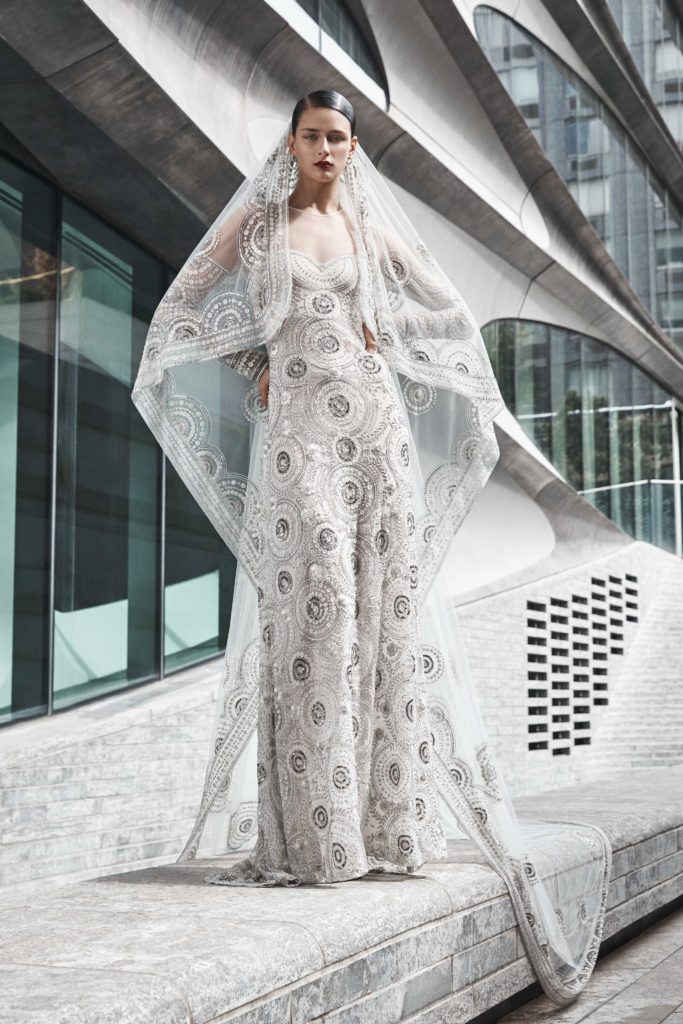 Embellished dress by Naeem Khan
Embellished dress by Naeem KhanFor a dramatic effect, opt for sparkling appliques to dazzle your guests. From delicate beading to iridescent sequins, embellishments lend a glamourous touch. For an embellished gown, choose simple accessories to ensure they don’t compete with each other.
Features
Cowl Neck
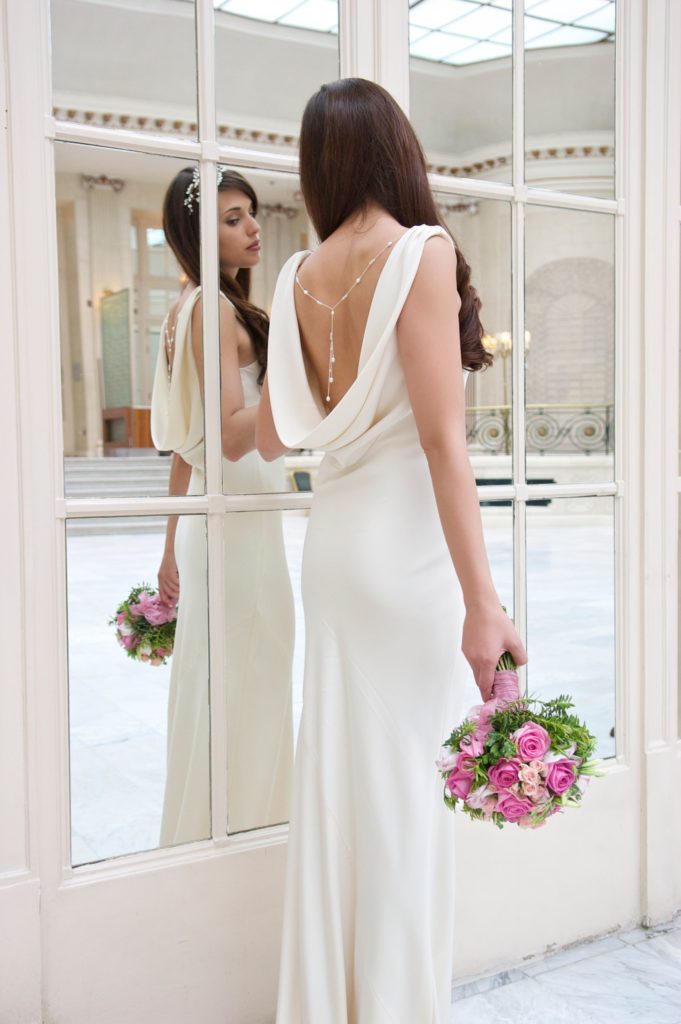 Cowl dress by Sabrina Motesem
Cowl dress by Sabrina MotesemAn alternative to the halter neck, the cowl neck is a fresh approach which is flattering to a multitude of body shapes and bust sizes. This was the style worn by Pippa Middleton at the royal wedding where she first catapulted into the spotlight in her role of bridesmaid.
Back Detailing
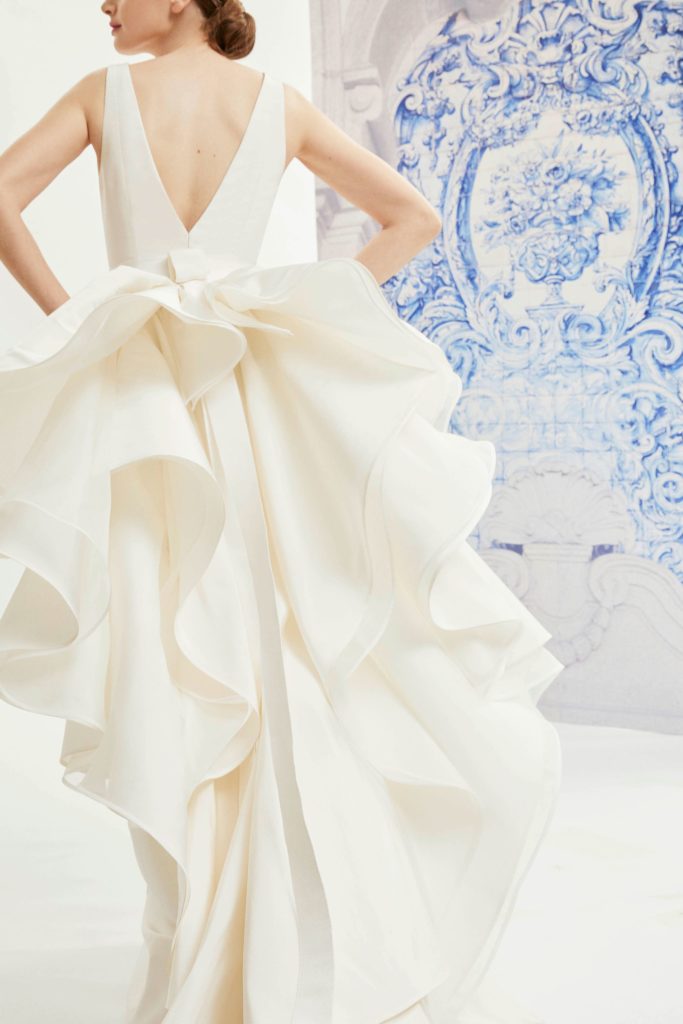 Back detail dress by Carolina Herrera
Back detail dress by Carolina HerreraProviding that “wow” moment when brides walk down the aisle, the detail in the back of a gown is increasingly becoming equally as important as the front. When exchanging your vows, a detailed back ensures something special to dazzle your guests. Princess Eugenie made many a headline at her nuptials last year when her dress was designed to show off her scoliosis scars from a back operation she underwent as a child.
Off the Shoulder
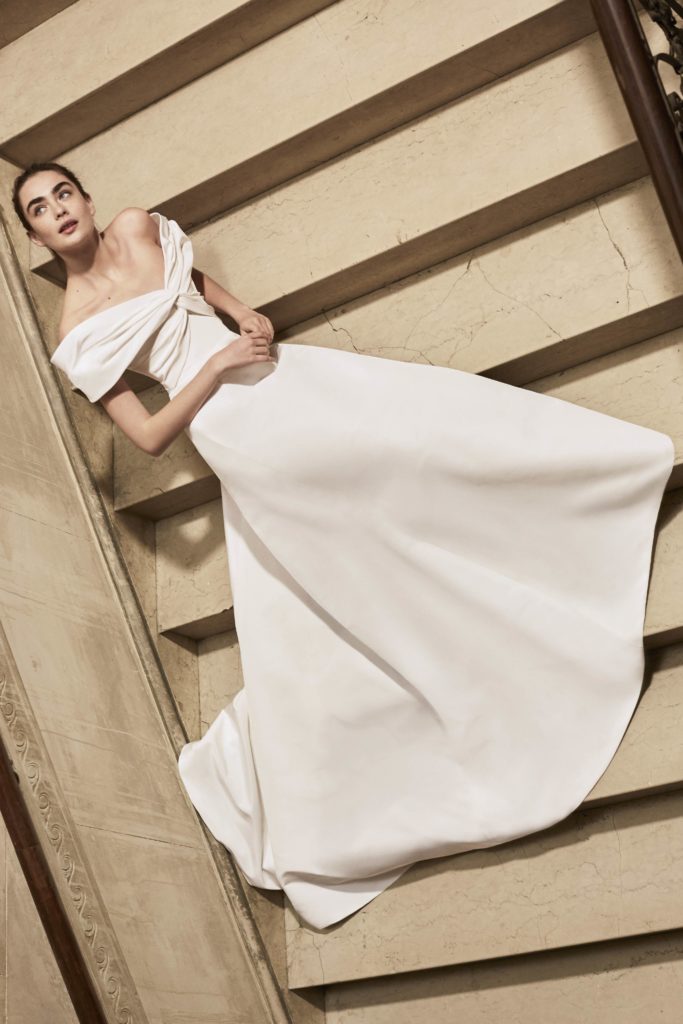 Off the shoulder dress by Carolina Herrera
Off the shoulder dress by Carolina HerreraPerfect for showing off the décolletage, an off the shoulder design is pretty and feminine. The ideal option for the bold bride, an off the shoulder design is understated yet sensual and remains a constant throughout the collections.
Long Sleeves
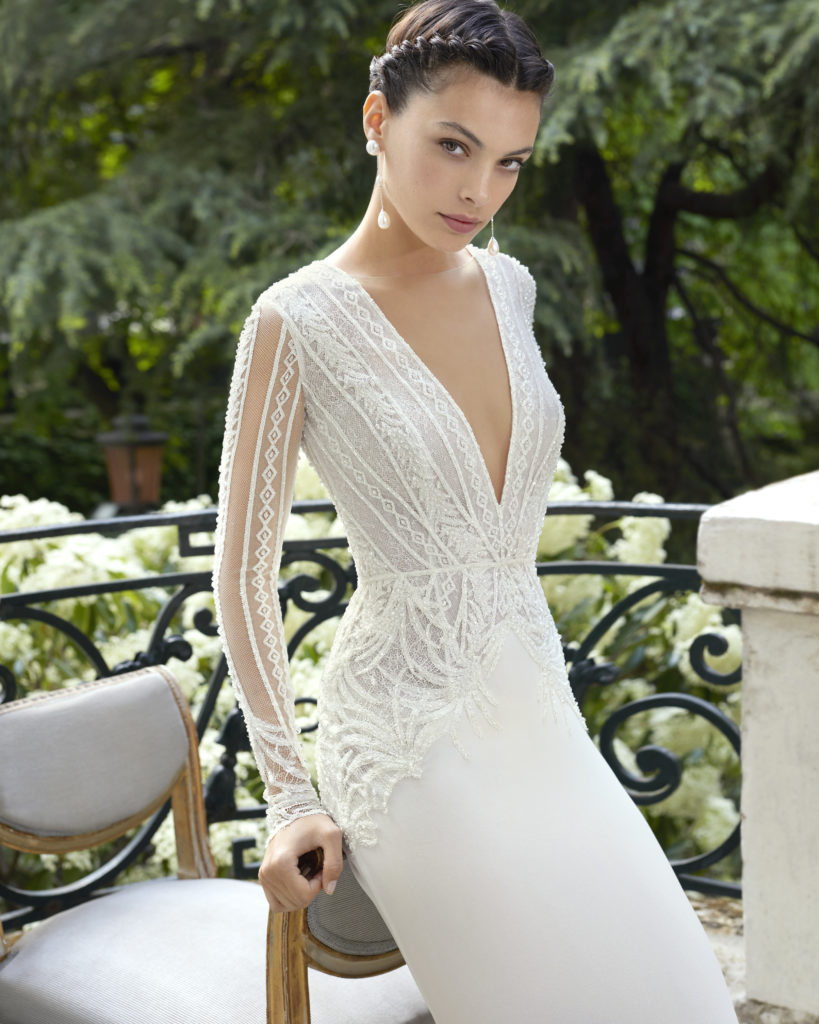 Long sleeve dress by Rosa Clara
Long sleeve dress by Rosa ClaraFrom lace to sheer, full-length sleeves bring a certain sophistication to wedding gowns without appearing frumpy. They also provide that extra bit of warmth for Irish brides on a cold winters day. From Pronovias to Oscar de la Renta, long sleeves were a prominent feature in this year’s collections.
Sweetheart Neckline
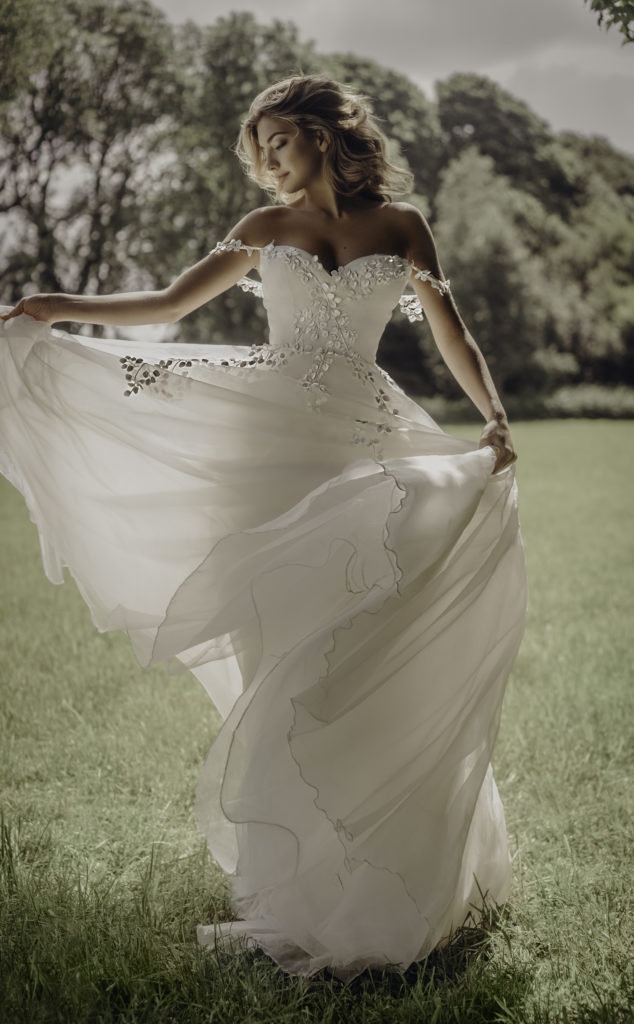 Sweetheart dress by Stephanie Allin
Sweetheart dress by Stephanie AllinShaped like the top half of a heart, could there be a more romantic shape to incorporate into your gown? This particular neckline gives the illusion of a longer torso and an elongated neckline making it a flattering choice for many brides.
Plunging Necklines
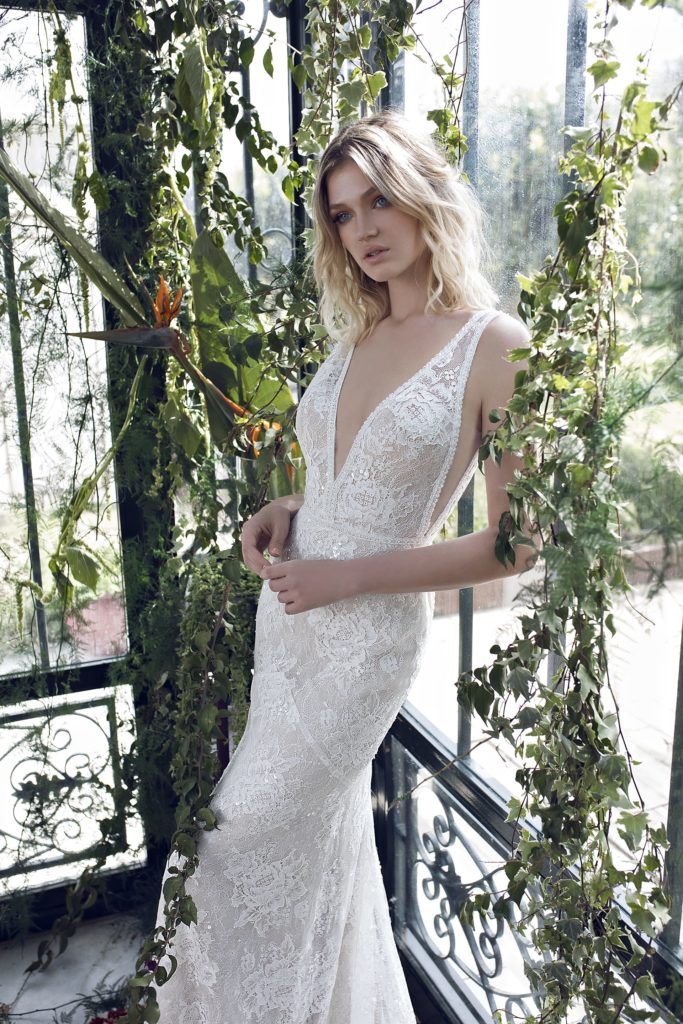 Plunging neckline dress by Limor Rosen
Plunging neckline dress by Limor RosenThe ever so bold v neckline is a popular choice in collections of late. When offset with a full skirt, the plunging neckline provides a lengthening effect as it draws the eye down, instantly giving the illusion of added height.
Train
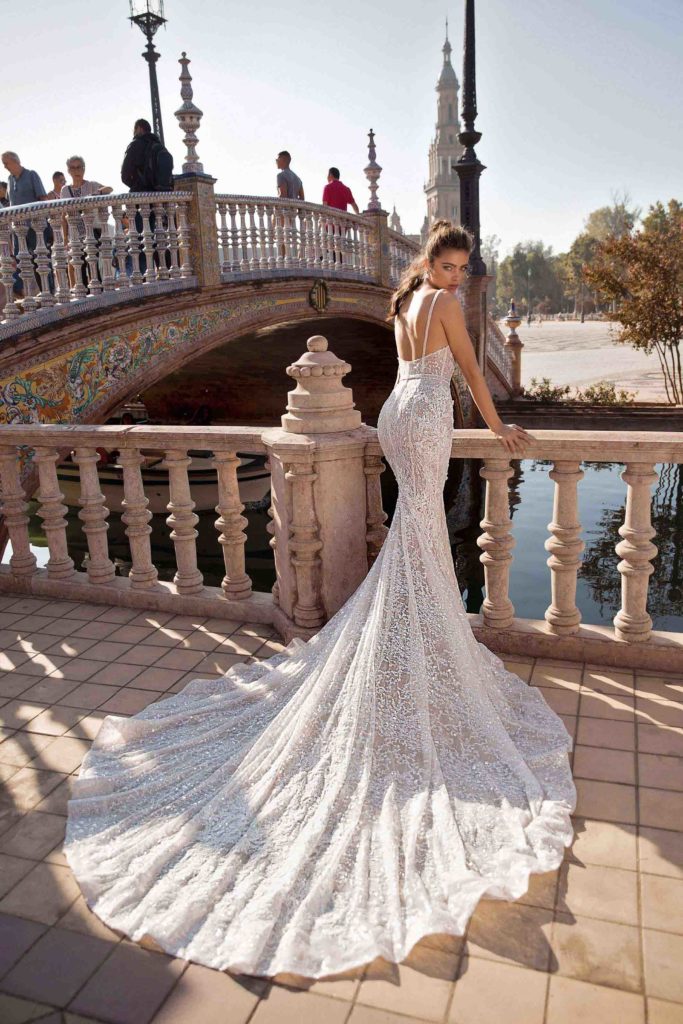 Train dress by Berta
Train dress by BertaThis is the trailing part of the dress which traditionally is held by the bride’s attendants. This comes in an array of sizes from brush being the shortest, and then growing in length to court, chapel, cathedral and finally, royal. Royal trains extend eight metres and are reserved for the most formal of weddings as the vast aisle of the church or cathedral is required to accommodate the additional fabric.
Drop Waist
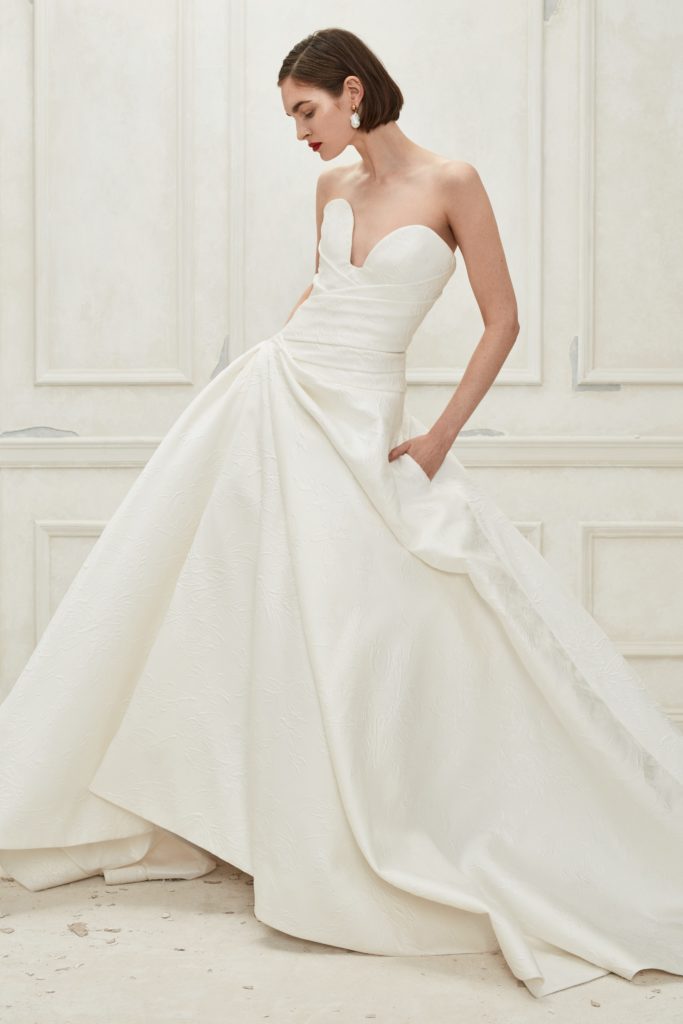 Drop waist dress by Oscar de la Renta
Drop waist dress by Oscar de la RentaCreating a waistline at the mid hip, a drop waist is perfect for highlighting the figure of those who are tall and well proportioned. Petite brides are advised to steer clear of these designs as it will throw off your proportions.
Additional Terms
Bias Cut
 Bias-cut dress by Suzanne Neville
Bias-cut dress by Suzanne NevilleThis is the technique used where fabric is cut on the diagonal, providing a more flattering silhouette. By cutting along the diagonal, the fabric utilizes the natural stretch in the material which allows the gown to emphasise the natural lines and curves of the body. It also prevents any seams in unwanted places which can draw attention to particular areas such as the stomach.
Bustle
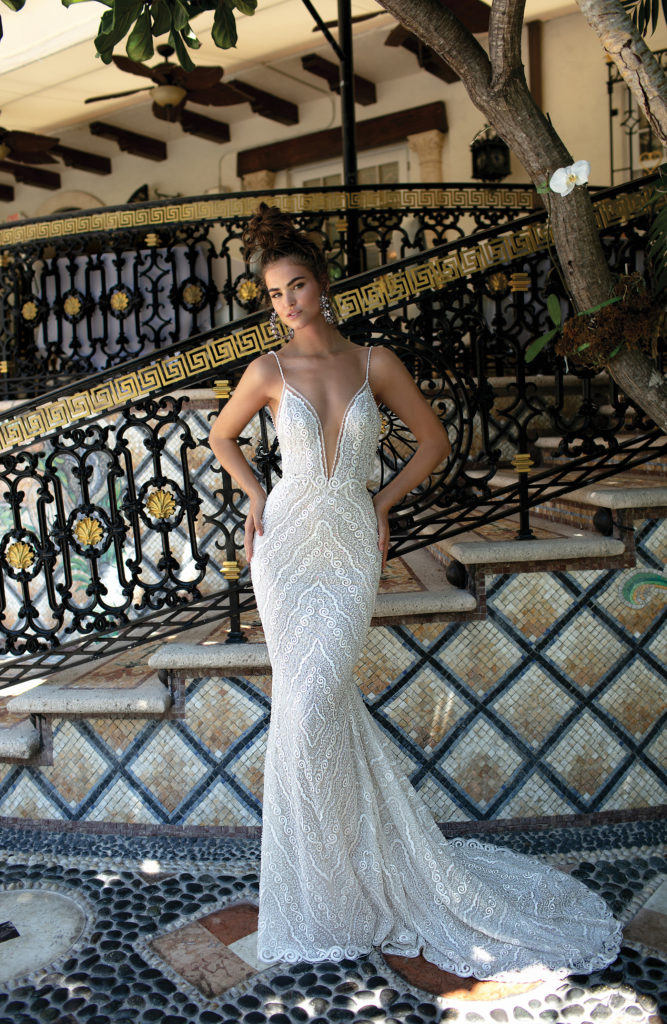 Bustle dress by Berta
Bustle dress by BertaA bustle is useful for brides who choose a long train on their dress. The train is scooped up and pinned to a hidden hook on the back of the gown so it doesn’t trail along the ground for the reception or get trampled on on the dancefloor. There are a variety of different bustles available to choose from to match your style of gown.
Illusion back/ neckline
 Illusion dress by Oscar de la Renta
Illusion dress by Oscar de la RentaA popular design in gowns in recent years, an illusion neckline or back involves a sheer panel of fabric, often complete with delicate stitching or embellishments of some description.
Boning
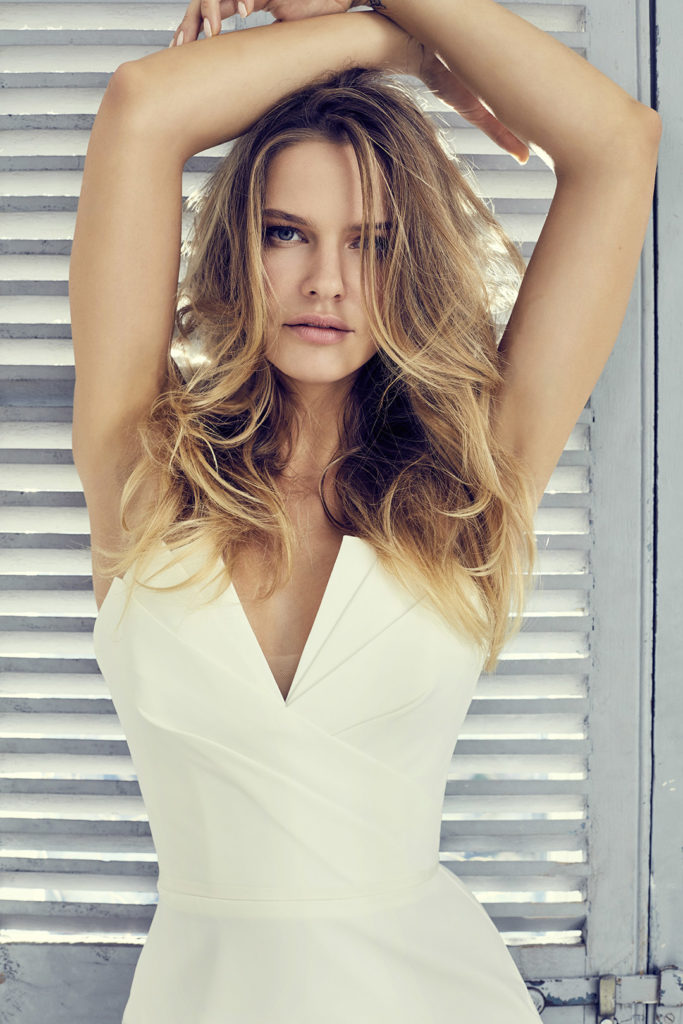 Boning dress by Suzanne Neville
Boning dress by Suzanne NevilleThis is a sturdy substance such as plastic which is stitched into some gowns, particularly strapless styles, to provide additional support and avoid the gown drooping. The corset-like design provides a snugger fit to give a more flattering look overall.

